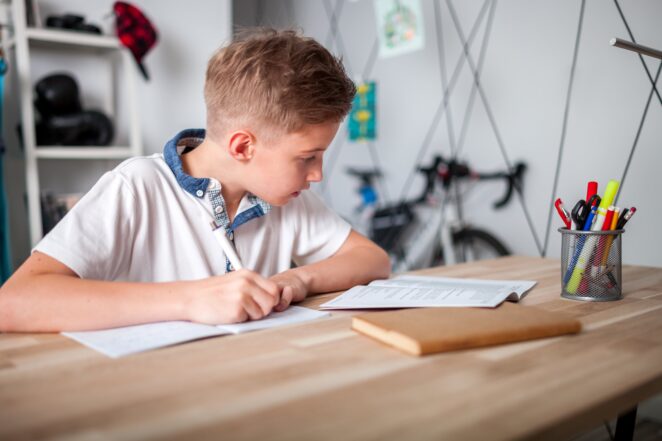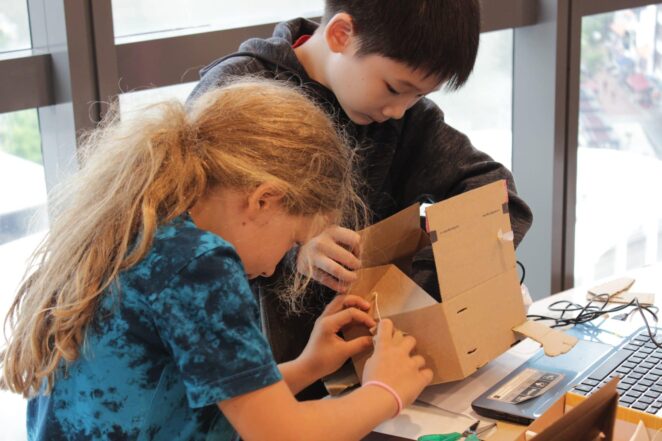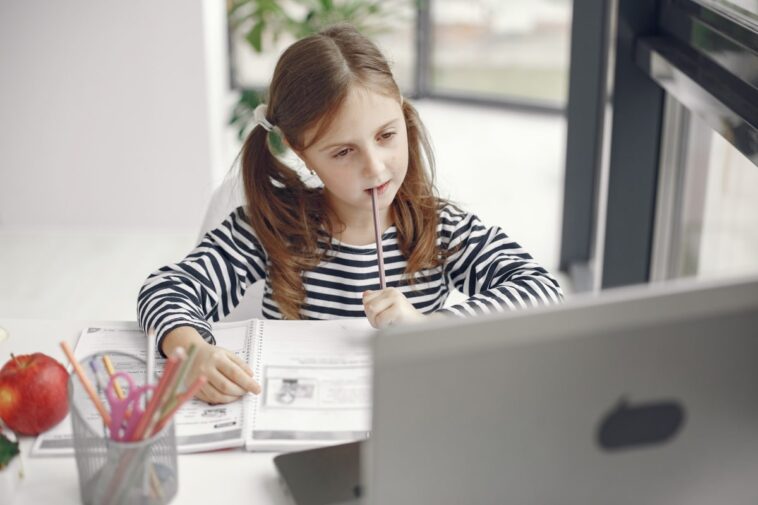While the classroom structure has its merits, a growing body of research suggests that self-paced learning can offer unique advantages, particularly for younger children. It respects the individuality of each learner and creates an environment where children can flourish at their own pace, free from the constraints of standardized approaches.
The concept of self-paced learning has been recognized for some time, and its application in early childhood education is recently gaining traction. Discover Little Scribblers and their counterparts, who are pioneering this forward-thinking educational approach, providing children with a tailored learning experience.
This article delves into the multifaceted benefits of self-paced learning for young children, exploring how it nurtures academic growth and holistic development.
Understanding Self-Paced Learning
Self-paced learning is an educational approach that allows students to work through course material at their own speed rather than being required to keep pace with a teacher or a class. Learners take on a more autonomous role, setting their own goals and deciding how to allocate their time and resources to achieve them.
The emphasis is on mastering the subject matter rather than completing assignments by certain deadlines. Students can spend more time on concepts they find challenging and skip or accelerate through material they already understand.
This method can be applied in various settings, including online courses, blended learning environments, and traditional classrooms. Self-paced learning often incorporates a variety of resources such as videos, readings, quizzes, and interactive exercises that students can engage with as they see fit.
Overall, self-paced learning aims to put the learner in the driver’s seat, fostering independence, self-discipline, and a personalized educational experience.
Benefits Of Self-Paced Learning

Self-paced learning offers a broad array of benefits that contribute to the learner’s holistic development. Below are some advantages that make self-paced learning a compelling alternative to traditional educational models.
Independent Learning
Self-paced learning places the responsibility of education in the hands of the learner. Instead of being passive recipients of knowledge, children become active participants in their learning journey.
This sense of ownership fosters an invaluable skill for life: independence. By making their own choices and navigating challenges, they become self-reliant thinkers capable of solving problems.
Moreover, when children realize that their progress results from their own efforts, it increases their self-confidence.
A sense of autonomy allows them to develop a proactive mindset, which is crucial for future success in various aspects of life, including academics, social interaction, and career planning.
Finally, the empowerment that comes from autonomy helps children develop resilience. They learn that setbacks are natural and that their ability to bounce back is within their control, fostering a growth mindset that is essential for long-term success.
Personalized Learning Experience
In a self-paced environment, educational material can be tailored to suit each child’s learning style, pace, and interests. Unlike traditional classrooms, where the teacher must cater to diverse learners, self-paced learning allows for a more personalized approach.
This targeted learning ensures that children fully understand the material at hand and increases engagement.
Children’s attention span grows When they find the subject matter interesting and relevant, making the learning experience much more effective.
Furthermore, personalized learning creates a feedback loop where the child’s performance informs the next steps. This adaptability ensures that children are consistently challenged but not overwhelmed, which is crucial for keeping them engaged and motivated.
Greater Flexibility

The rigidity of set schedules in traditional schooling can be stressful for children and parents. Self-paced learning eliminates this issue by offering a more flexible approach to education.
This is particularly beneficial for families with irregular work hours and children involved in extracurricular activities.
Additionally, flexibility in learning pace allows children to spend more time on difficult concepts while quickly moving through material that they find easy. This ensures that no time is wasted on unnecessary repetition.
Moreover, flexibility extends to the learning environment itself. Self-paced programs often provide the option of digital learning, making education accessible wherever there’s an internet connection.
This can be a great advantage for families that travel or those who prefer home-based learning.
Reduced Stress And Anxiety
Fixed schedules and standardized testing often contribute to stress and anxiety in children. Self-paced learning, on the other hand, takes a different approach. Allowing children to move through the material at a pace that suits them alleviates the pressure of keeping up with peers.
This reduced stress has a ripple effect on other areas of life. Children who are less anxious about academic performance are more open to social interactions and other activities that contribute to a balanced life.
Furthermore, lower stress levels positively impact mental health, which is crucial for a child’s overall well-being. Reducing stress and anxiety also leads to better concentration and improved academic performance in the long run.
Creativity And Innovation
One of the most underrated benefits of self-paced learning is the room it provides for creativity and innovation.
Unlike traditional educational settings where conformity is often encouraged, self-paced learning allows children to explore their interests in depth.
This deeper exploration naturally leads to questioning, experimenting, and creating, which are key components of innovative thinking.
When children are not limited by the boundaries of a fixed curriculum or by time constraints, they are free to explore a range of subjects and ideas.
In essence, self-paced learning serves as a fertile ground for nurturing creativity. The freedom to choose and the time to delve deep into subjects of interest can unlock the innovative potential that resides in every child.
Stronger Parent-Child Relationships

Self-paced learning often involves greater parental involvement, as parents serve as facilitators in the child’s educational journey.
This interaction can significantly strengthen the parent-child relationship, creating a bond that is built on mutual respect and shared experiences.
Furthermore, as parents become more involved, they better understand their child’s strengths, weaknesses, and interests. This knowledge is invaluable for guiding the child through academic challenges and life decisions.
A close parent-child relationship also fosters a supportive environment where children feel encouraged to take risks and explore, knowing they have a safety net to fall back on. This security can be crucial in cultivating a confident, capable individual.
Future Learning Models
The future of education is leaning towards more flexible, personalized learning models, making self-paced learning a valuable preparation for what lies ahead.
By becoming accustomed to this learning style early, children are better equipped to adapt to various educational settings as they grow.
Moreover, many higher educational institutions and workplaces already incorporate self-directed learning components.
Having experience in this kind of environment prepares children for the expectations of the adult world, giving them a competitive edge.
Lastly, self-paced learning cultivates lifelong learners. The skills developed—such as self-discipline, time management, and critical thinking—are academic and life skills that will serve them well in all future endeavors.
Conclusion

Self-paced learning offers a myriad of benefits that extend far beyond academic achievement.
This educational approach nurtures holistic development in young children by fostering independence, providing a personalized learning experience, and offering greater flexibility.
Additionally, it helps to reduce stress and anxiety, enhances creativity, strengthens parent-child relationships, and prepares children for future learning models.
In an ever-changing world, self-paced learning equips children with the skills and mindset to adapt, grow, and thrive.




